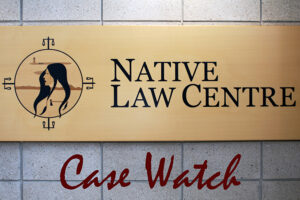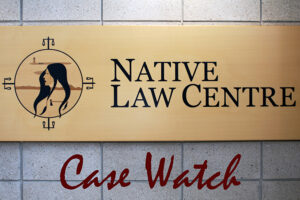Application for severance of a trial concerning declarations of Aboriginal title and general Aboriginal rights, is granted on the terms sought by the Plaintiffs, with the exception that matters related to rights will only be decided in respect of the Representative Interests.
This is a case management application for an order severing the trial of an action into two parts, Phase 1 and Phase 2. The Court is satisfied that the Plaintiffs have demonstrated that there is a real likelihood that an order severing this trial into two parts will result in saving considerable time and expense. In the action, the Plaintiffs seek a declaration of Aboriginal title and Aboriginal rights to the terrestrial portions of Haida Gwaii. What is defined as the “Claim Area”, includes its inland waters, to the waters and submerged lands within the surrounding territorial sea (12 nautical miles from the coastal baseline) and to all living creatures such as fish and birds during times that they are present. The Plaintiffs claim general Aboriginal rights, including the right to harvest, manage and trade fish, marine resources and trees within the Claim Area.
The Plaintiffs’ claim that the Defendants have infringed their asserted Aboriginal title and general Aboriginal rights by issuing tenures, permits and licences, conveying land and passing laws in relation to Haida Gwaii that do not accommodate the Plaintiffs’ interests. The principle form of infringements for which compensation is sought from the Defendants are related to forestry, fisheries and land alienations. The Plaintiffs seek compensation for these infringements, or for unlawful interference with their asserted Aboriginal title, rights, and an accounting of all benefits collected in connection with Haida Gwaii. However, the Plaintiffs confirmed that they are not seeking to quash tenures, permits or licences or conveyances of land or to eject fee simple owners. They are only seeking compensation for relevant losses.
With respect to various procedural matters during and after trial, the Plaintiffs submit that a) following the completion of Phase 1 of the trial, the Court’s determination of the issues addressed in that phase will be the final determination of those issues; b) the parties may appeal the decision in Phase 1 before the commencement of Phase 2, but Phase 2 may proceed pending such appeals with the consent of the parties; c) that subject to availability, the same Justice will be seized of both phases of the trial which will be a single trial; and d) evidence heard in the Phase 1 of trial shall be deemed to be evidence in Phase 2 of the trial.
The key issue in dispute was whether Phase 1 of the trial should include a determination of broader Aboriginal rights, beyond those pertaining to the Representative Interests. The Court decided that matters related to general Aboriginal rights will only be decided in respect of the Representative Interests. Both Canada and British Columbia dispute that the plaintiffs have Aboriginal title to all of the Claim Area and both agree that the Plaintiffs’ claims with respect to Aboriginal title over private lands and submerged lands are novel. No such claims were dealt with in Tsilhqot’in Nation v. British Columbia. The Court reasoned that, without severance, evidence concerning a defence of justification for infringement to Aboriginal title would have to be adduced for the entire Claim area. With severance, once title is determined in Phase 1, the Court will only have to concern itself in Phase 2 with infringements to areas where title has been declared. Previous comprehensive title cases have not resulted in compensatory awards. The intention of the parties is that in Phase 1 the question of whether pecuniary damages are payable in respect of the Representative Interests, and from when, are what is to be judicially determined.
The expectation is that such a determination will assist in either the settlement of damages claims for other claimed interests or by establishing a framework for evaluating such claims, which can be utilized in Phase 2. The Court agrees with the submissions of the Plaintiffs that the establishment of a template for determining compensation may considerably reduce the range of expert financial computations and evidence required to compute damages valuations and other remedies as the parties intend to engage in negotiations after Phase 1. None of the parties suggest that resolving any of the issues in Phase 1 will, in and of itself, eliminate the requirement for Phase 2. However, the Court is satisfied that an order severing this trial into two parts will facilitate settlement discussions between the parties and may therefore result in an end to the action.




